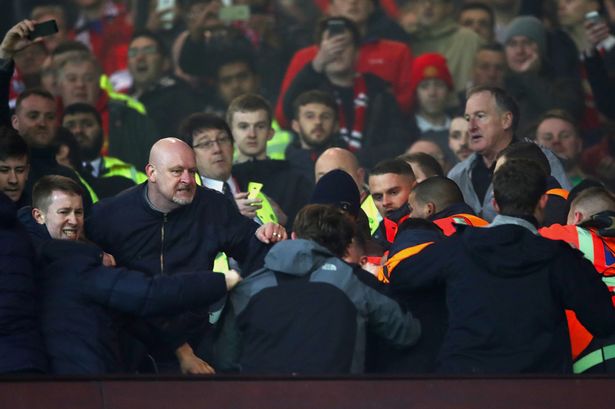AFTER MUCH DELIBERATION THE FA HAVE FINALLY ISSUED THE PUNISHMENT FOR AMPADU AFTER WHAT HE POSTED ON MEDIA ABOUT MORGAN RODGER
For days, English football has been gripped by a storm that seemed to grow larger by the hour. A single social-media post—just a few lines of text added in the heat of a controversial Premier League clash—ignited a chain reaction that eventually forced the Football Association into emergency deliberations. Headlines surged. Pundits argued. Fans waged digital battles. And in the middle of the chaos stood Leeds United captain Ethan Ampadu, facing what would become the most scrutinised disciplinary review of his career.
The FA’s final verdict has now been delivered. It comes after extended discussion, internal review, and what insiders described as an “unusually high volume of public interest.” The decision brings an end—at least officially—to a saga that consumed the football world. Yet the implications may continue rippling for weeks.
To understand how things escalated to this point, it is necessary to revisit how the entire incident began, why Morgan Roger became the central figure in the debate, and how a single confrontation spiraled into national attention.
THE TACKLE, THE FLASHPOINT, AND THE MOMENT THAT LIT THE FUSE
The controversy took form during a high-stakes match between Leeds United and Aston Villa, a fixture already loaded with competitive intensity and league-table implications. For long stretches, the battle raged in midfield, where Ampadu and Aston Villa’s rising talent Morgan Roger found themselves in repeated clashes.
The game had already been physical, but the moment that dominated every replay came deep into the second half. A quick Villa counter saw Roger break down the flank, and Ampadu—tracking back with urgency—lunged in to halt the run. Both players collided. Both immediately sprang up. Words were exchanged. Tempers flared. Referees intervened. Camera angles were dissected endlessly online.
What happened next extended the situation beyond the pitch.
THE POST THAT SHOOK SOCIAL MEDIA
Once the final whistle blew, both clubs left with grievances about a series of refereeing decisions. But the true explosion came hours later when Ampadu posted a reaction online. The post did not name Morgan Roger directly, nor did it accuse him of anything explicit. But it contained just enough insinuation—just enough emotional charge—to trigger immediate interpretation, misinterpretation, and debate across football circles.
Within minutes, fan accounts had screenshotted the message. Within an hour, thousands had shared it. Within a day, the post had reached the front pages of football news sites, sparked podcasts, and dominated social-media timelines.
Some supporters praised Ampadu’s passion. Others condemned the tone. Pundits were worse: debate shows and YouTube channels latched onto the topic like oxygen feeding a flame.
By the following morning, FA representatives confirmed they had “taken note” of the situation. This was the moment the story shifted from internet noise to official scrutiny.
WHY THE FA GOT INVOLVED
The FA’s involvement was not unexpected. Their responsibility extends beyond on-pitch behavior, especially when player commentary online risks escalating tension, encouraging harassment, or damaging the reputation of another professional.
The association reportedly reviewed:
- the timing and context of Ampadu’s post
- how the message was interpreted publicly
- whether it violated rules regarding player conduct
- the impact on Morgan Roger, Aston Villa, and match officials
- the broader effect on football culture
Throughout the process, neither club issued public statements criticizing their player, but both were drawn into discussions behind closed doors.
Insiders claimed that Aston Villa expressed concern that the online reaction toward Roger escalated to abusive territory, a pattern increasingly scrutinised by the FA in recent years.
Meanwhile, Leeds reportedly defended Ampadu by emphasizing that his message was emotionally charged but not directly abusive or inflammatory.
The FA considered both sides. Yet pressure mounted from fans across the league who demanded clarity.
That clarity finally arrived.
THE PUNISHMENT: WHAT THE FA DECIDED AFTER DAYS OF DELIBERATION
After internal meetings, assessment of the post, and reviews of past similar cases, the FA delivered the punishment—one designed to serve as a reminder of responsibility without escalating the fallout.
The FA issued:
1. A formal warning for online conduct
Ampadu received an official warning, stating that future posts of similar tone—especially involving fellow professionals—would result in stronger disciplinary action.
2. Mandatory educational session on public communication
Not as a punishment but as a reinforcement of the standards expected from players representing top-tier clubs. This mirrors previous FA actions in comparable cases.
3. No match ban and no financial fine
The FA concluded that the post did not meet the threshold for “direct misconduct” or “targeted disparagement.” As a result, Ampadu avoided harsher consequences.
4. Reinforcement of guidelines to all Premier League clubs
The decision included an FA-issued reminder circulated to club communication departments about player social-media policies during emotionally intense periods.
While some fans expected stronger sanctions and others believed no action was necessary at all, the FA settled on a middle path—firm but measured, corrective but not punitive.
MORGAN ROGER’S ROLE IN THE SITUATION
Morgan Roger remained publicly silent through the entire saga, which many credited as a mature response. Those close to the player suggested he preferred to avoid fueling the controversy by responding online.
Instead, he focused on training and preparing for Aston Villa’s next fixture. Villa staff reportedly checked in with him throughout the situation and advised him not to engage publicly.
Despite Roger’s silence, the football public continued placing him at the center of arguments, defending or criticizing Ampadu’s interpretation of their on-pitch exchange.
This constant attention became one of the FA’s concerns. Their ruling referenced “the need to ensure digital sports discourse remains fair and respectful to all players.”
REACTION FROM FANS, CLUBS, AND PUNDITS
Once the verdict was announced, reactions poured in across every digital platform.
Leeds United Supporters
Many Leeds fans expressed relief that their captain avoided suspension. They argued that passion should not be policed too strictly and that footballers are human beings who experience the same emotional swings as fans.
Aston Villa Supporters
Villa fans were divided. Some felt the punishment was too light considering the online backlash Roger faced. Others admitted that Ampadu’s message was vague and did not justify a ban or fine.
Neutral Fans
A significant portion of neutral supporters viewed the FA’s decision as a fair balance: an acknowledgment that players’ words carry weight but also recognition that emotional expression should not always trigger harsh penalties.
Pundits
Commentators on major sports networks were, unsurprisingly, entrenched in opposing camps.
Some insisted players must be held to higher standards when posting online because of the scale of influence they possess. Others argued that football authorities need to adjust to the modern digital game, where immediate emotional reaction is the norm.
THE BROADER IMPLICATIONS FOR FOOTBALL
This incident will likely influence future FA decisions involving social-media use by players. Several broader issues surfaced:
1. Digital responsibility in high-emotion sports
Football moves fast. Tempers flare. Post-match reaction travels even faster. The FA appears increasingly focused on building frameworks that prevent online hostility from escalating.
2. Player–player disputes going public
As more players use platforms to express frustration, football governing bodies seem determined to prevent personal disputes from becoming viral battlegrounds.
3. The growing power of fan reaction
Public pressure—supportive or critical—played a major role in accelerating the FA’s review. Football authorities now operate in a space where fan opinion can shape disciplinary timelines.
CONCLUSION: A SAGA THAT WILL BE REMEMBERED
The drama surrounding Ampadu’s post about Morgan Roger is now officially concluded, but its impact on football conversation will linger. It highlighted how quickly an emotional moment can escalate into a nationwide debate. It reinforced how digital platforms magnify every expression from professional athletes. It reminded the world that football’s governing bodies are paying close attention to what happens online—not just what happens on the pitch.
The FA’s final decision—measured, cautious, and symbolic—signals a shift toward clearer expectations in the digital era.
For Ampadu, the episode ends without severe penalty but with a reminder of his influence.
For Morgan Roger, it ends without accusation and with widespread respect for his silence.
For the football community, it becomes another example of how intensely the sport examines every detail.
And as always, the Premier League marches on—never quiet, never simple, never without drama.








Post Comment